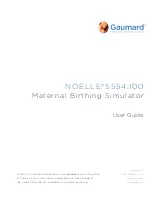
microBrute DRSSTC Tesla Coil Kit
November 2019, Rev 5
− 11 −
Copyright © 2011, Eastern Voltage Research, LLC
microBrute DRSSTC Instruction Manual
down with respect to AC neutral as it switches. To protect the half-bridge switching
devices from excessive current, it is important to sense the primary current and shutdown
the half-bridge whenever a specified current limit is exceeded. This is accomplished by
sensing current through current transformer, T21, rectifying it and comparing it to a
specified threshold through U21, a LM311 voltage comparator. When the current sample
exceeds it preset current limit threshold, it triggers an overcurrent pulse which is fed into
a synchronized shutdown circuit, comprised of U1, U2, and U3, which disables the half-
bridge switching circuit. The synchronized shutdown circuit ensures that the half-bridge
shutdowns only when it is not conducting any current. If the half-bridge shutdown while
it was conducting current, it could lead to large magnitude inductive voltage spikes which
could potentially damage the switching devices, Q41 and Q42. To control the DRSSTC,
a handheld modulator is connected via RCA connector, J1. This provides a low
frequency pulse signal which turns the DRSSTC ON and OFF at a nominal frequency of
100Hz with a very low duty cycle. The handheld modulator has two user adjustable
knobs which control both the pulse repetition frequency (PRF) and the pulsewidth. When
a modulator pulse is received at J1, the pulse first enables and turns ON gate driver, U4,
for one single pulse. This pulse provides the initial impulse necessary to start the
DRSSTC and drive it into oscillation. From that point, the primary current is then
sampled via current transformer, T1, which self-resonates the DRSSTC for the remainder
of the pulse burst where the pulse burst length is equal to the pulsewidth output of the
handheld modulator controller. The half-bridge switching circuit, comprised of high
current IGBT switching devices, Q41 and Q42, provides the +170V/-170V pulses
required to power the Tesla Coil. Finally, polypropylene capacitors, C101 and C102, in
conjunction with the Tesla Coil primary, L101, form the resonant tank circuit of the
DRSSTC. C101 and C102 make up what is commonly called the primary MMC
capacitor.
For more detailed theory on DRSSTCs, please check out our
DRSSTC: Building the
Modern Day Tesla Coil
book series.




























